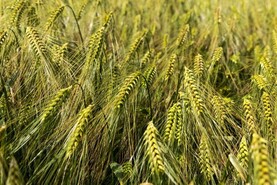Grass seems to be growing at a phenomenal rate for the vast majority of beef farmers, with surplus having to be taken out to try get things under control.
The highest growth is being seen in the northwest, though consequently this area is also seeing the highest amounts of rainfall, making it challenging to get a dry window of weather in which to mow and bale these out.
What to do in the next few weeks regarding grass will be very farm dependent. Where there is a surplus of grass on farm, ample fodder saved and second cut ground to come back in to the rotation in the next few weeks, then scaling back on fertiliser is probably not a bad idea.
Another viable option is to take out some ground for reseeding. If a paddock was to be sprayed off in the morning and all went to plan, then this field will receive its post emergence spray in early September and be grazed in (hopefully) good conditions in mid-September.
Where grass is tight, fertiliser application will have to be kept close to the 20 units/acre mark and timed with whatever rainfall is hitting your area. Some farms are only set to get 8mm of rain in the next week which will do little in the way of washing in fertiliser, but if it was to come in a relatively short burst it would be of better use.
Ken Gill – Clonbollogue, Co Offaly
I mowed and baled my peas and barley this week which yielded 105 bales off eight acres. It could have done with slightly more of a wilt but I’m happy enough overall. I was afraid of it becoming too strong and smothering out grass underneath, so I decided to cut it.
Second cut was also completed on the red clover sward, with 85 bales harvested from 12 acres. I have some slurry held for this which will hopefully go on it tomorrow (Thursday) with the intention to cut again in eight weeks’ time.
I have some paddocks taken out of the rotation for silage, but these will be in a months’ time. Calving is due to kick off in a month, and cows are in decent but not over fat condition.
System Suckler to beef
Soil Type Variable
Farm cover (kg/DM/ha) 699
Growth (kg/DM/ha/day) 44
Demand (kg/DM/ha/day) 26
Trevor Boland – Dromard, Co Sligo
It’s a quiet time of the year on farm. Growth is excellent and I’d likely take out some paddocks if we get a dry spell. Second-cut silage ground is now fit for mowing as well, with the hope being to bale this over the weekend.
Much of the grazing ground received two bags acre of 18-6-12 in June and combined with the high levels of clover in the sward, I’m seeing good growth with clean swards of grass, owing to us running tight and grazing down tight in late May/early June.
I’ve held off on selling bulls for the time being, with the ample grass on farm. They are thriving well and putting on cheap weight gain at grass, with heavier bulls not being an issue like in other years for exporters.
System Suckler to weanling
Soil Type Variable
Farm cover (kg/DM/ha) 1,011
Growth (kg/DM/ha/day) 82
Demand (kg/DM/ha/day) 63
Stephen Frend – Newford Herd, Co Roscommon
We have taken out 15 acres of paddocks on the grazing platform this week. This will bring the total volume of surplus bales taken this year to 300, showing just how good growth has been.
Second-cut grass for the suckler herd is also being lifted this week, while third-cut for the trial finishing animals (red clover vs. PRG swards) is also being pitted. This measured well, pre-cutting at between 4,500-4,800kg DM/ha, despite it being third-cut.
We will scale back on fertiliser going forward now, applying 15 units/acre per round as we will have the second-cut ground coming back in to the rotation. Calves were weighed for the first time this week, with bulls averaging 196kg and heifers 161kg.
System Suckler to beef
Soil Type Variable
Farm cover (kg/DM/ha) 835
Growth (kg/DM/ha/day) 60
Demand (kg/DM/ha/day) 53






 This is a subscriber-only article
This is a subscriber-only article










SHARING OPTIONS: